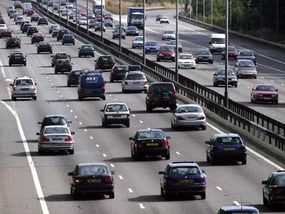Imagine living without a car. It’s something few of us can imagine. Families don’t just have one or even two in the driveway; instead, they’ve become mandatory for every driver in the household.
Here in Denver, it’s almost impossible to exist without a car. Some choose downtown living to be close to everything. But mass transit will only get you so far. We’re not set up like other cities. Your car is your key to freedom. It gets you into the hills for a day of skiing, around town for a day of errands, and out late at night when you’re ready to hang with friends.
But all that running around means burning more fuel. And even though fuel has somewhat steadied in price over the years, it still can take a lot to fill your tank up every week. It’s quite the line item in your monthly budget. Is there a way to improve fuel economy to save money? If the manufacturer gives you a fuel efficiency range, is there a way to always be in the upper range?
Turns out, there is. You don’t have to invest in an electric car, or make radical changes to your existing car to see the benefits.
What causes poor gas mileage?
Bad gas mileage is caused by a number of things. Ultimately, they can be lumped into two categories: problems with your car, or problems with your driving habits.
Poor gas mileage means that your car isn’t operating as efficiently as it possibly can. It also means you’re losing money every time you pull into the pumps because you’re having to do so more frequently than necessary.
Let’s start with your car. The best reason to keep it in good working condition is for performance. If it’s running correctly, it will perform at its best. And that means you’ll see the best fuel economy possible for your make and model.
Poor fuel economy can come from:
Bad oxygen sensors or air filters. The oxygen sensor helps keep the proper mixture of air and fuel in your car. If this is out of balance, your car will be inefficient. The air filter grows dirtier the longer it’s in place. They need to be cleaned and replaced on a regular basis to ensure your car is working as it should.
Incorrect tire pressure. Proper tire pressure means your car is handling as designed. Tire pressure is easy to check, and should be checked and filled regularly. You’ll find manufacturer’s recommended pressure levels either on the driver’s side doorplate, or in your owner’s manual. Over inflating is equally as bad as underinflated tires; keep them in the range suggested by the manufacturer.
Spark plug problems. Spark plugs are designed to spark combustion and start your engine. If they misfire, or are working poorly, they reduce the efficiency of the fuel supply.
Bad fuel injectors. The fuel injectors are responsible for moving fuel into the engine. If the system has a leak, the proper amount of fuel isn’t making it where it’s supposed to be.
The wrong motor oil. Different cars use different types of motor oil. You can’t expect to put in the cheapest form and expect it to run at high performance levels. Think of it as the difference between living on cheap processed food versus a whole grain, fruit and vegetable diet. Both will keep you alive, but one will make you more efficient at everything you do. Check your owner’s manual for guidance on the right motor oil, or ask one of our mechanics which is the right for your vehicle.
How can I improve my fuel economy?
Once your car is in the best shape possible, it’s up to you to turn your driving habits around in order to avoid poor fuel economy.
Avoid the “pedal to the metal.” When was the last time you left late for work, or for a meeting? Did you push how fast you drove by a few miles? Did you ride closer to the person in front of you, zipping in and out of traffic trying to make up the time? While you might save a minute or two, you’re also cutting back on your engine’s efficiency. To push your car harder, faster, it takes more fuel to get there.
The same holds true when you slam on the brakes. Sudden acceleration away from stoplights or stop signs, combined with pounding on the brakes as you get too close to the person in front of you kills fuel economy. It also wears down other parts of your vehicle like the braking system. Not only will you spend more money at the pump, but you’ll also spend more time and money in the repair shop too.
Pay attention to fuel grade. Do you know what grade of fuel your vehicle’s make and model are supposed to have? It’s easy to think that if you put a higher performance fuel into your car, it will run better. But that isn’t always the case. When your car was designed, it had certain specifications in mind. They built it, tested it, and tested it some more. Then they created recommendations to ensure it runs at optimal performance levels so long as you abide by their guidelines. Likewise, if you have a high performance car, putting higher octane fuel isn’t just important, it’s also a requirement to ensure it works its best. Check with the guidelines and pay attention at the pump.
Watch weight. Today’s vehicles are bigger than ever before. We love our SUVs and crossovers to be able to bring everything we need with us. But does your vehicle look like you’re going on vacation when all you’re doing is driving to work? The more stuff you carry in your car, the more it weighs. And a heavier vehicle has to work harder to get from point A to point B.
Stop idling. Did you know it takes up to a gallon of fuel to leave your car idling for an hour? That means the time you spend sitting in carpool lane, waiting for your spouse to run into the grocery store, or even turning your car on in the morning to let it warm up has an impact on your fuel economy. Turning your car off in each of these situations will actually help you be more efficient overall.
What steps have you taken to improve your vehicle’s fuel economy?

